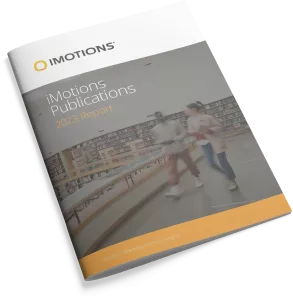-
Elements of Style in Floral Arrangements: How Discerning Are Consumers Toward Floristry Design Principles and How Much Are They Willing to Pay?
Florists use design theory to create arrangements that they assume will be pleasing to consumers, thus increasing purchase rates and spending. However, certain elements of design theory and their relationship with consumer acceptance and spending have not been empirically tested. Using mixed logit models and eye-tracking technology, we investigated whether consumer preferences support three key […]
-
The Effectiveness of Online Cause-Related Marketing Message Framing on Hotel Brand Evaluation
Abstract: The purpose of this study is to examine the interaction effect between online Cause-Related Marketing (CRM) advertisements and brand reputation on consumers’ brand evaluation in the hotel industry. Two experimental studies were conducted: (1) a survey-based experiment that demonstrates the moderating role of brand reputation, and (2) a laboratory experiment using psychophysiological measurements of emotional […]
-
A Neurophysiological Approach for Measuring Presence in Immersive Virtual Environments
Presence, the feeling of being there, is an important factor that affects the overall experience of Virtual Reality (VR). Higher presence commonly provides a better experience in VR than lower presence. However, presence is commonly measured subjectively through postexperience questionnaires, which can suffer from participant biases, dishonest answers, and fatigue. It can also be difficult […]
-
Using Eye Tracking to Reveal Responses to the Built Environment and Its Constituents
Eye-tracking technology has numerous applications in both commercial and research contexts. The recent introduction of affordable wearable sensors has significantly broadened the scope of potential uses, spanning fields such as computer gaming, education, entertainment, health, neuromarketing, and psychology, among others. Another development is the use of downloadable software, which permits participants to record their responses […]
-
Effect of changing threat conditions on police and military commanders’ preferences for urgent and offensive actions: An analysis of decision making at the operational level of war
A simulation was conducted to examine the decision making of 102 high-ranking police and military commanders (male/female = 88/12, mean years of employment = 22.15) engaged in a simulated hybrid attack on Norway. Four 2 × 3 repeated-measures ANOVA tests were performed, with two groups (police, military) and three phases (peace, war, and post-conflict) as independent variables. The decision tasks of […]
-
Understanding Learning Engagement with User-Centered Human-Computer Interaction in a Multimodal Online Learning Environment
Multimodal online learning environment improves learning experience through different modalities such as visual, auditory, and kinesthetic interactions. Multimodal learning analytics (MMLA) with multiple biosensors provides a way to overcome the challenge of analyzing the multiple interaction types simultaneously. Galvanic skin response/electrodermal activity (GSR/EDA), eye tracking and facial expression were used to measure the learning interaction […]
-
Visual Analysis and Recognition of Virtual Reality Resolution Based on Pupil Response and Galvanic Skin Response
The ability to efficiently assess the resolution of VR videos is critical for the implementation and advertising of VR products. Pupil responses and Galvanic Skin Response (GSR) are direct and objective mirrors of the emotional activity of humans. They are unaffected by subjective will and has excellent real-time performance, which can be used for VR […]
-
Design and assessment of an experimental model for evaluating the effectiveness of audiovisual products on the circular economy aimed at promoting environmental awareness
Communication is crucial to encourage citizens to adopt sustainable habits, but the effectiveness of awareness-raising actions in the last decade has been limited. Therefore, it is essential to invest efforts to understand and improve the effectiveness of environmental awareness actions. This research aims to design an experimental model to evaluate the effectiveness of audiovisual products on ecological […]
-
Comparison of visual attention and purchase intention of traffic light and warning disc supplementary nutritional labels in the Zamorano University student population
Malnutrition is a health condition that either excise or deficient nutrient consumption can characterize. In the Latin American region, while there is still a high prevalence of undernutrition, the region also suffers from obesity, with an estimate that one in four adults is obese. One of the main drivers of the increasing prevalence of obesity […]
-
Self-reported and electroencephalogram responses to evaluate sponsorship congruence efficacy
Information for measuring the performance of a commercial action is essential for any organization. Sponsorship actions have increased significantly in the last few decades, but academics and practitioners have not yet found a suitable indicator for measuring their performance. This is the first study to propose an objective indicator—frontal alpha asymmetry using an electroencephalogram. Our […]
Research Report 2023
In-depth look at the scientific landscape as powered by iMotions software, showcasing groundbreaking research and the impact of our tools in various scientific and industrial fields.

Share Your Research

850+ universities worldwide with an iMotions human behavior lab
73 of the top 100 highest ranked universities
710+ published research papers using iMotions
iMotions is used for some of the most interesting human behavior research studies carried out by top researchers around the world. Contact us to have your publication featured here.
The authors of these publications have used iMotions as a software tool within their research.
“Software should be cited on the same basis as any other research product such as a paper or a book; that is, authors should cite the appropriate set of software products just as they cite the appropriate set of papers” (Katz et al., 2020).
We therefore encourage you to cite the use of iMotions where appropriate.
How to cite iMotions
APA
iMotions (10), iMotions A/S, Copenhagen, Denmark, (2024).
Note: adjust the version and year where relevant.
5 Most Popular Blogs
Learn How to Conduct Human Behavior Research with iMotions
Publications
Read publications made possible with iMotions
Blog
Get inspired and learn more from our expert content writers
Newsletter
A monthly close up of latest product and research news





